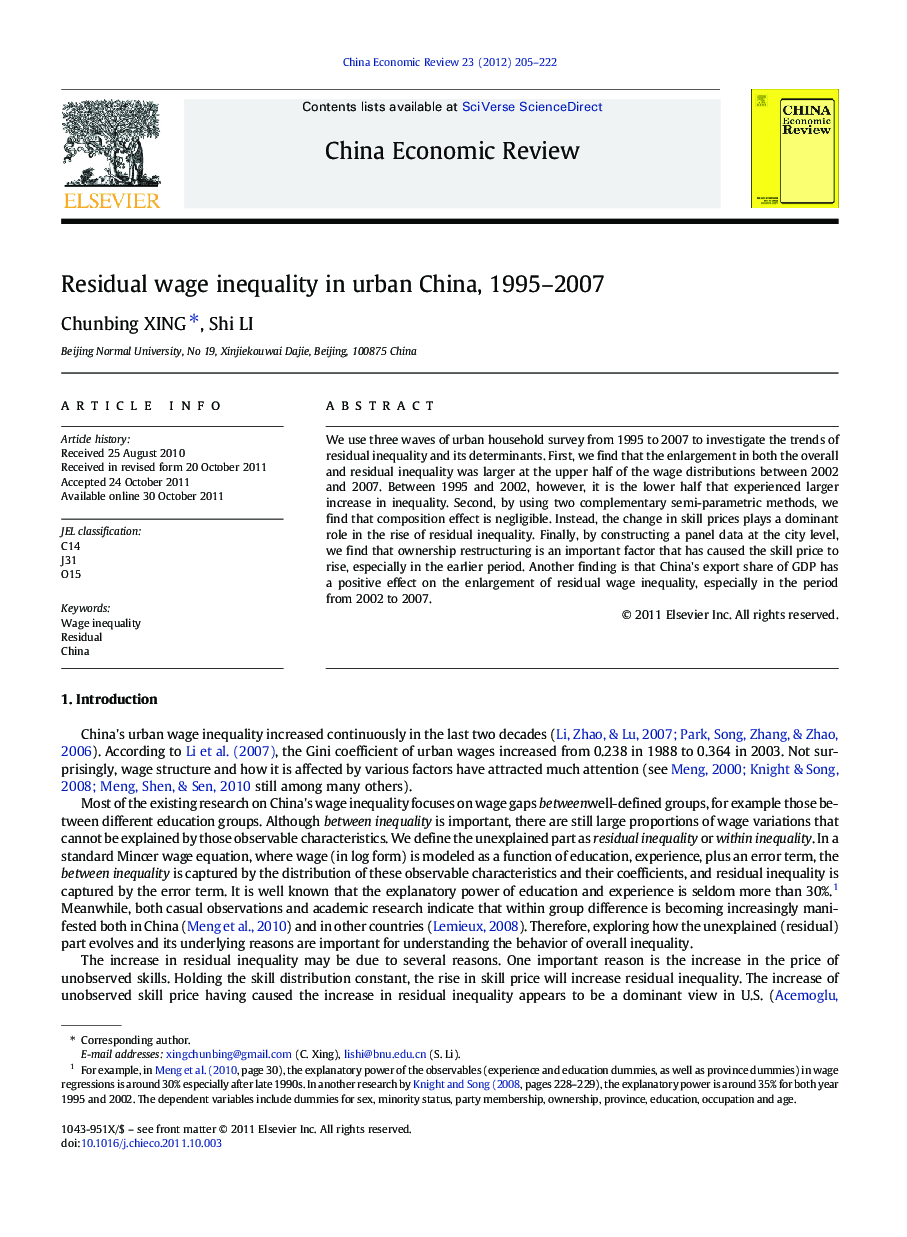| Article ID | Journal | Published Year | Pages | File Type |
|---|---|---|---|---|
| 5047788 | China Economic Review | 2012 | 18 Pages |
We use three waves of urban household survey from 1995 to 2007 to investigate the trends of residual inequality and its determinants. First, we find that the enlargement in both the overall and residual inequality was larger at the upper half of the wage distributions between 2002 and 2007. Between 1995 and 2002, however, it is the lower half that experienced larger increase in inequality. Second, by using two complementary semi-parametric methods, we find that composition effect is negligible. Instead, the change in skill prices plays a dominant role in the rise of residual inequality. Finally, by constructing a panel data at the city level, we find that ownership restructuring is an important factor that has caused the skill price to rise, especially in the earlier period. Another finding is that China's export share of GDP has a positive effect on the enlargement of residual wage inequality, especially in the period from 2002 to 2007.
⺠We examine the Chinese urban residual wage inequality during 1995-2007. ⺠The change patterns of residual inequality during 1995-2002 and 2002-2007 were different. ⺠We use two semi-parametric methods to decompose the change in residual wage inequality. ⺠The increase in residual wage inequality was mainly due to price effect. ⺠Ownership restructuring and export increased skill prices in fixed effects models at the city level.
